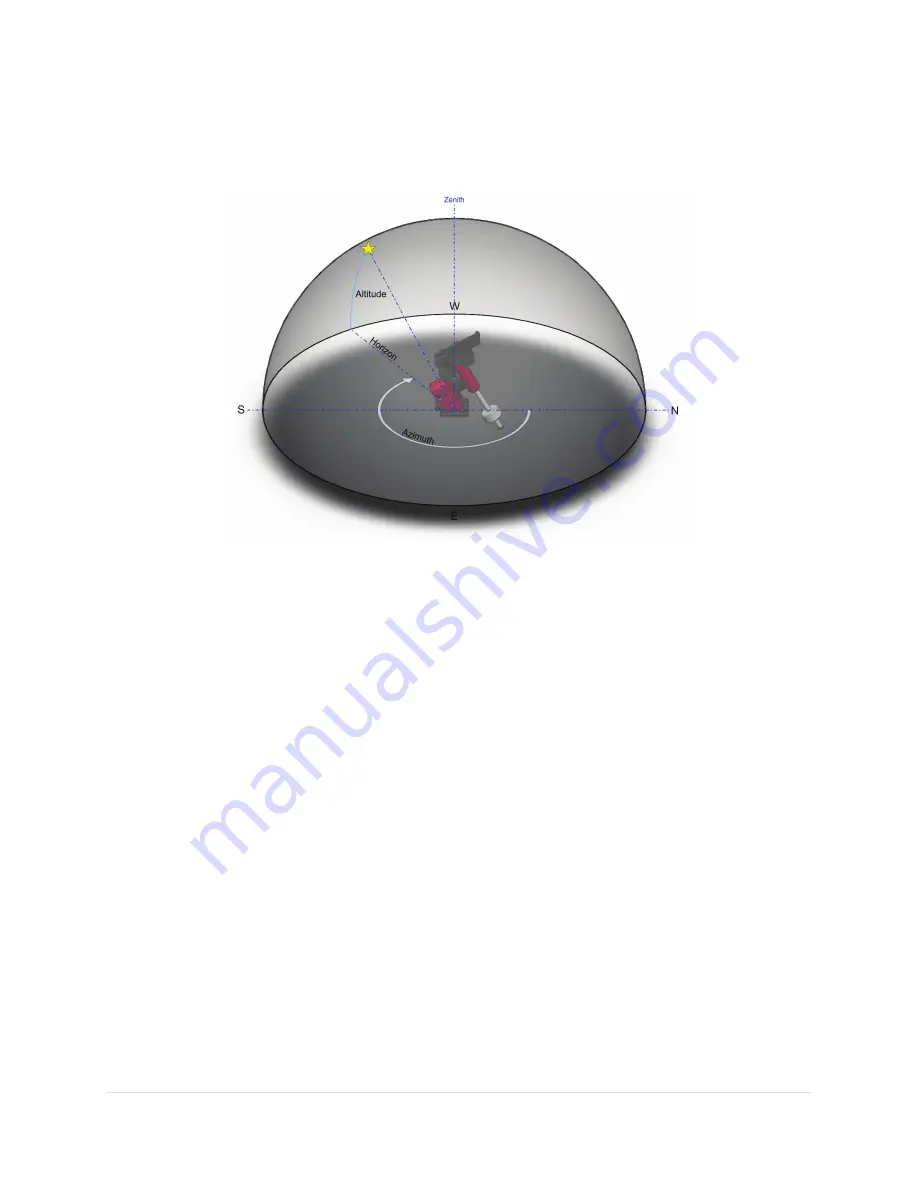
Paramount MX User Guide
13 |
P a g e
negative altitude means the object is below the horizon. The
azimuth
of an object is reckoned from
north, increasing clockwise (when viewed from above), and ranges from 0 to 360 degrees. North is 0
degrees, east is 90 degrees, south is 180 degrees and west is 270 degrees.
Figure 2: The horizon-based altitude and azimuth coordinate system.
Altitude
The altitude (alt) of an object is expressed as the number of degrees from the horizon (the ground at a
far distance) to the object, and is always between minus 90 and plus 90 degrees. Objects that have a
negative altitude are below the horizon. For example, the Sun just after sunrise is close to the horizon
so it has an altitude of a couple of degrees, and just after sunset its altitude is minus one or two degrees.
Azimuth
The azimuth (az) of an object is generally reckoned from North, increasing in the clockwise direction,
and ranges from 0 to 360 degrees. North is 0 degrees, east is 90 degrees, south is 180 degrees and west
is 270 degrees.
When the Paramount MX is controlled by
TheSkyX Professional Edition
, attempting to slew the mount
below the local horizon is not permitted and will result in an error message.
The Equatorial Coordinate System
The horizon coordinate system is not convenient for specifying the location of celestial objects because
the horizon coordinates of stars and other objects are continuously changing with time (due to the
rotation of the Earth).
The exception occurs with objects near the north and south celestial poles. These positions are unique
since they are near to the axis of rotation of the Earth and therefore move only in small circular paths.
Polaris, the North Star, for example, remains at a nearly constant altitude and azimuth. In the equatorial




























